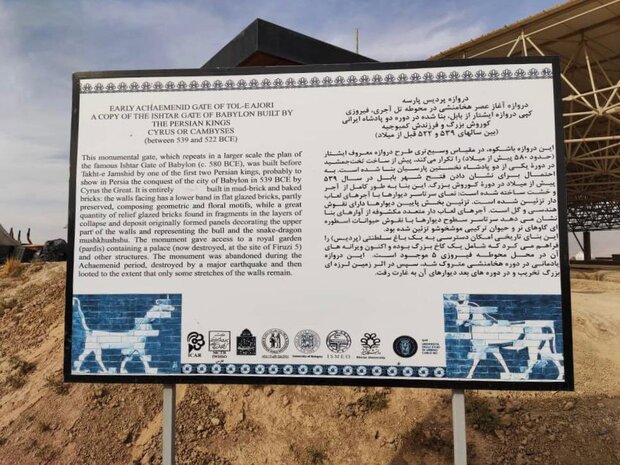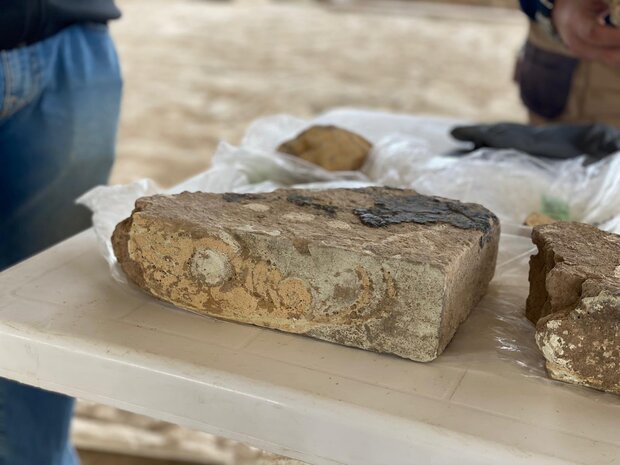Italian ambassador visits Persepolis, admires newly-unearthed ‘staggering’ bricks

TEHRAN – Rome’s ambassador to Tehran Giuseppe Perrone has paid a visit to the UNESCO-registered Persepolis when he admired sets of glazed bricks recently unearthed by a team of Iranian and Iranian experts.
Accompanied by several diplomates and embassy staff, the envoy visited Tall-e Ajori, a ruined royal gateway in the vicinity of Persepolis, where he admired the discoveries.
“Admiring the staggering glazed bricks bearing bull and dragon motives just excavated by an Italian and Iranian team at Tol-e Ajori site in Persepolis,” Perrone tweeted on Wednesday.
In a previous interview with the Tehran Times, the ambassador said: “We have had a [top] mission in Persepolis, ‘Restorers without Borders’ as well as a joint archeological mission of the University of Bologna, ISMEO and the University of Shiraz (co-led by Prof. Francesco Callieri and Prof. Ali Askari), who brought in Iran a very cutting-edge technology to restore some parts of the Persepolis. . . It was like a breakthrough.”

The glazed bricks bear motifs of bulls and mushhushshu-dragons, the latter is a mythical creature once popular in ancient Mesopotamia. Narratives say that mushkhushshu is a mythological hybrid animal with hind legs resembling the talons of an eagle, lion-like forelimbs, a long neck and tail, a horned head, a snake-like tongue, and a crest.
The Mushkhushshu most famously appears on the reconstructed Ishtar Gate of the city of Babylon, dating to the sixth century BC. In ancient Babylon, mushhushshu (pronounced “moosh-hoosh-shoo”) was a divine creature associated with Marduk, the main god of the city.
Covering 13-ha majestic approaches, monumental stairways, throne rooms (Apadana), reception rooms, and dependencies, Persepolis is classified among the world’s greatest archaeological sites.

Persepolis was the seat of the government of the Achaemenid Empire, though it was designed primarily to be a showplace and spectacular center for the receptions and festivals of the kings and their empire. It was burnt by Alexander the Great in 330 BC apparently as revenge to the Persians because it seems the Persian King Xerxes had burnt the Greek City of Athens around 150 years earlier.
Greek and Roman historians described how Achaemenid buildings were covered in spectacular amounts of gold. Persepolis alone is said to have contained 2,500 tonnes of it. Herodotus wrote that Achaemenid soldiers ‘glittered all over with gold, vast quantities of which they wore about their person’.
AFM

Leave a Comment